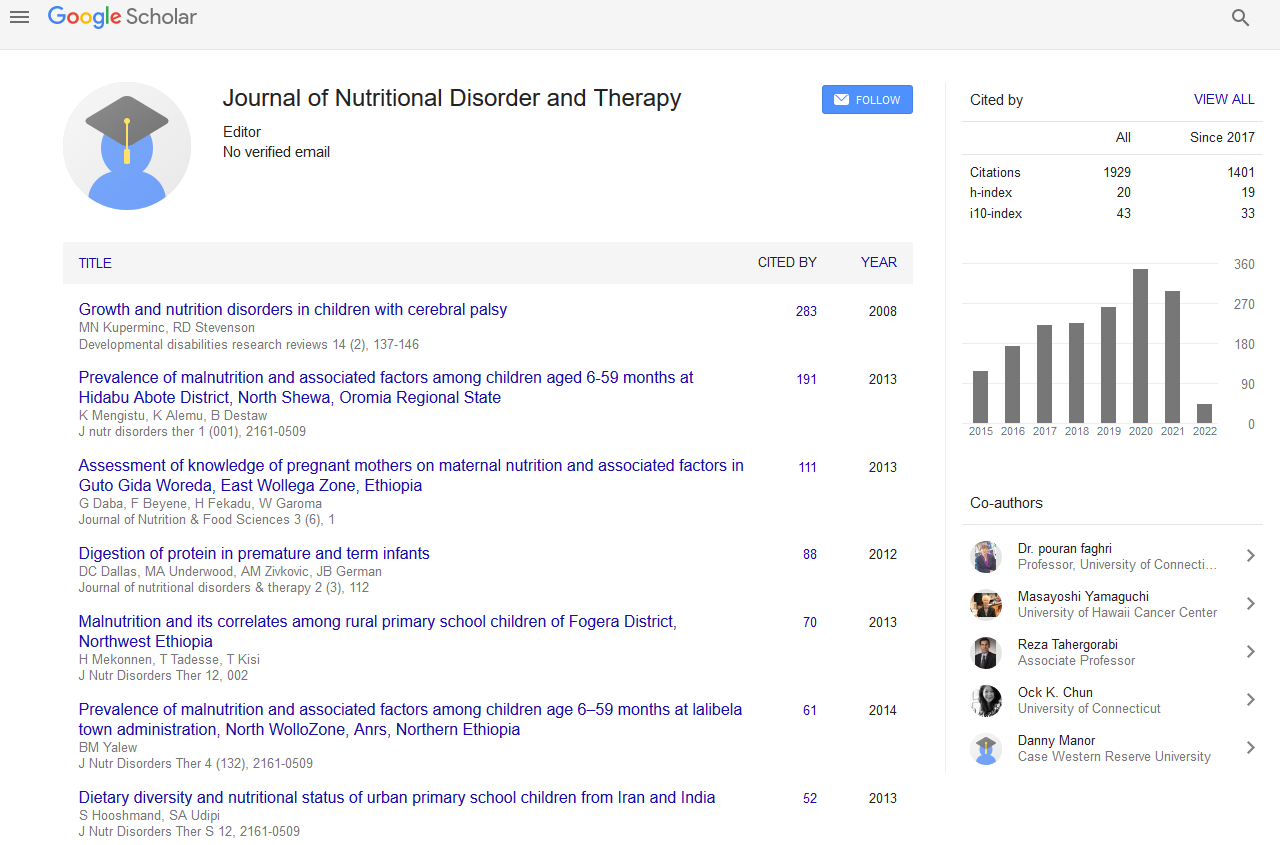Indexed In
- Open J Gate
- Genamics JournalSeek
- Academic Keys
- JournalTOCs
- Ulrich's Periodicals Directory
- RefSeek
- Hamdard University
- EBSCO A-Z
- OCLC- WorldCat
- Publons
- Geneva Foundation for Medical Education and Research
- Euro Pub
Useful Links
Share This Page
Journal Flyer

Open Access Journals
- Agri and Aquaculture
- Biochemistry
- Bioinformatics & Systems Biology
- Business & Management
- Chemistry
- Clinical Sciences
- Engineering
- Food & Nutrition
- General Science
- Genetics & Molecular Biology
- Immunology & Microbiology
- Medical Sciences
- Neuroscience & Psychology
- Nursing & Health Care
- Pharmaceutical Sciences
Abstract
Prevalence of Iron Deficiency Anemia and Determinants among Pregnant Women Attending Antenatal Care at Woldia Hospital, Ethiopia
Tsegahun Worku Brhanie and Habtamu Sisay
Background: Anemia is one of the most widespread public health problems, especially in developing countries. It impaired cognitive development, reduced physical work capacity and in severe cases increased risk of mortality particularly during prenatal period. Anemia in pregnant women is defined by low hemoglobin levels, below 11g/dL in 1st and 3 rd trimester and less than 10.5 g/dl 2nd trimester. The objective of this study is to assess prevalence of iron deficiency anemia in pregnant women at Woldia general hospital.
Method: This was a cross-sectional study conducted within a five month period at Woldia General Hospital.
Results: Out of 243 women enrolled in the study, ninety five (39.1%) were found to be anemic. Anemia was more prevalent in the first (52.2%) and second (52.6%) trimesters. nine women (9.5%) had severe anemia, and 86 women (90.5%) had mild anemia. Association with previous antenatal care follow up, the pregnant women who has history of ANC follow up in previous pregnancy has low prevalence (48.2%) whereas those who did not have antenatal care follow up previously have high prevalence (94.4%).
Conclusion: Prevalence of anemia is high in the study area and determined by different factors like feeding habit, level of education and history of antenatal care follow up. Based on this finding we recommend that; iron supplementation should be encouraged as a prophylactic measure. Health education for women on antenatal care follow up and diversified feeding practice should be given for the reduction of anemia.


